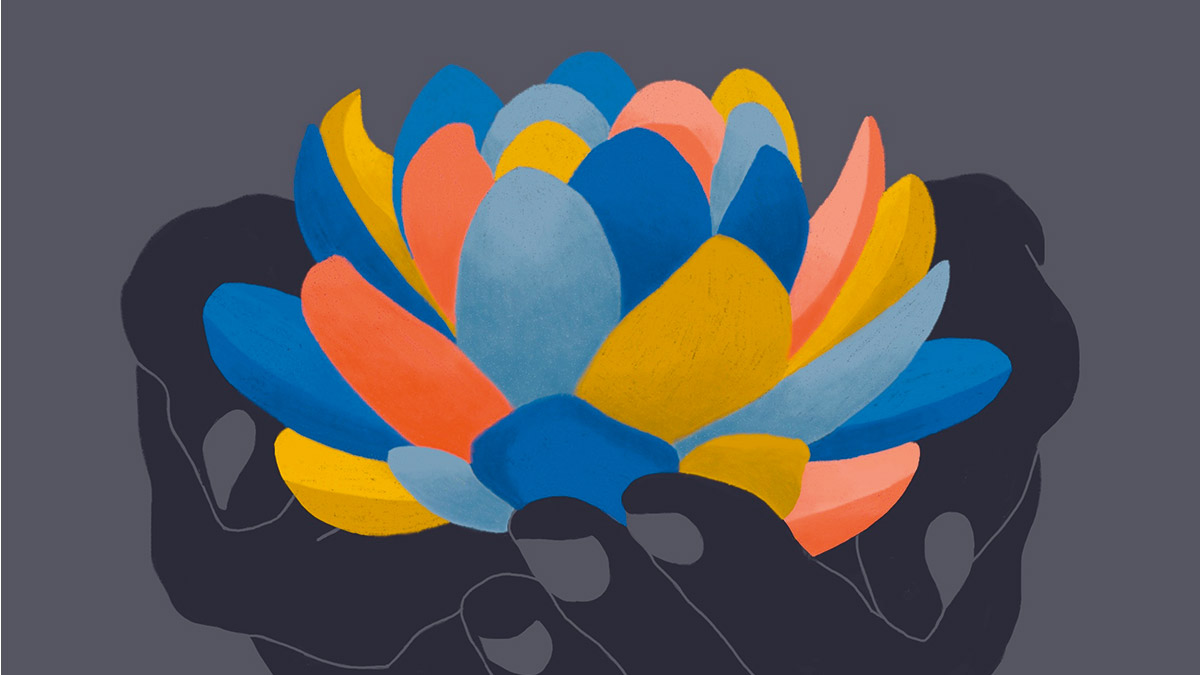The paramis or paramitas are qualities that assist us develop and attain true happiness, our highest potential. They’re typically translated as “perfections,” as they’re the perfections of character essential for enlightenment.
Zen grasp Thich Nhat Hanh known as them practices that assist us cross from the shore of confusion and struggling to the shore of liberation. Kittisaro, cofounder of Sacred Mountain Sangha, speaks of them as “the important qualities of coronary heart that carry us safely by the swirling floods of existence to the unshakeable groundedness and well-being of our true nature.”
“Might all of us be guided by the attractive paramis and paramitas on our path of awakening.”
Whereas parami and paramita are each Pali phrases, Pali literature principally makes use of the time period parami, whereas paramita is extra widespread in Mahayana teachings. Within the Pali canon there are ten paramis, and in Mahayana texts there are six paramitas. As you will notice, there’s fairly a little bit of overlap.
The ten paramis are:
1. Dana: generosity
2. Sila: advantage, morality
3. Nekkhamma: renunciation
4. Panna: knowledge
5. Viriya: vitality, vigor, effort
6. Khanti: endurance, tolerance
7. Sacca: truthfulness, honesty
8. Adhitthana: dedication, resolve
9. Metta: goodwill, loving-kindness
10. Upekkha: equanimity, serenity
The six paramitas are:
1. Dana: generosity
2. Sila: advantage, morality
3. Ksanti: endurance, tolerance
4. Virya: vitality, vigor, effort
5. Dhyana: one-pointed focus, meditation
6. Prajna: knowledge
I discovered in regards to the six paramitas once I was twenty-three, the primary time I attended a retreat in Plum Village, France. I used to be deeply moved by their the Aristocracy. Whereas mountain climbing within the Pyrenees after the monthlong summer season retreat, I keep in mind coming upon a gorgeous tree coated in delicate, emerald moss. In that second, I spontaneously improvised a paramita prostration apply with the tree as my altar.
I knelt with reverence to the tree. I positioned my brow on the earth and turned my palms upward. I breathed out and in, considering how I might be extra open to the paramita of giving, searching for concrete methods to domesticate generosity within the coming days. After a couple of minutes, I stood and bowed. I prostrated once more, nestling into the delicate earth, and contemplated how I might deepen my moral conduct in day by day life. Then, in flip, I contemplated the opposite 4 paramitas.
Trying deeply to see how I might convey every paramita into my day by day life was profoundly uplifting, serving to me embed them extra deeply in my consciousness. It additionally gave me a clearer sense of course for the trail of transformation I used to be strolling on.
It’s widespread for practitioners to take one of many paramis or paramitas as the main target of their apply for per week, month, or 12 months, after which transfer on to a different. For the paramita of generosity, I’ve discovered Joseph Goldstein’s apply very useful. He tries to hearken to and comply with the impulse to present when it first arises. He tries to not be swayed by second ideas or doubts, which might dampen or reduce the preliminary considered generosity. Strive it!
Within the items that comply with, ten Buddhist academics every speak about a distinct parami. They share how the paramis are classically understood and the way working towards with them enriches their lives.
Might all of us be guided by the attractive paramis and paramitas on our path of awakening. Might they ripen in us an increasing number of every day.
Kaira Jewel Lingo is the creator of We Have been Made for These Occasions and coauthor of Therapeutic Our Approach House.
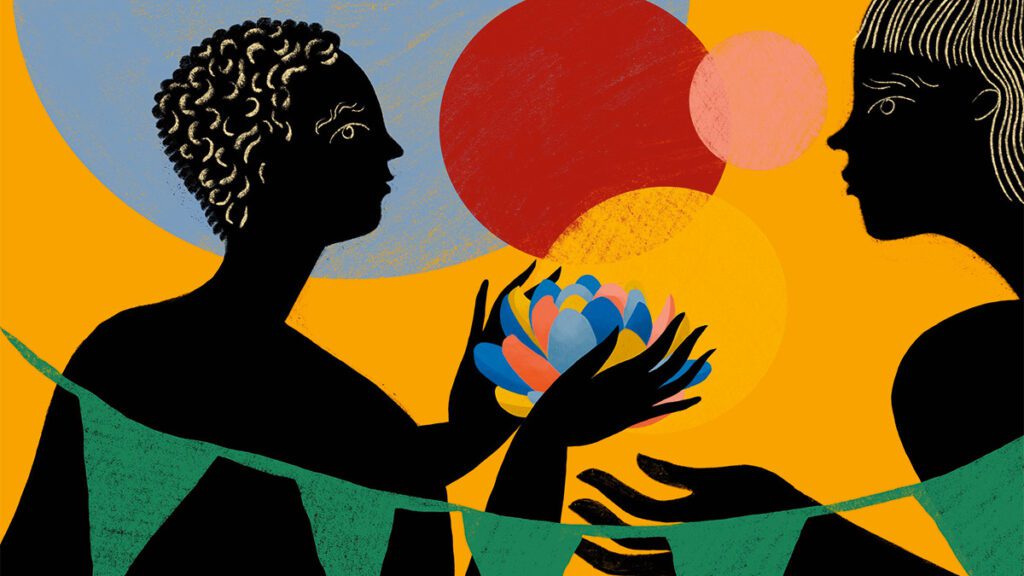

Generosity
Gaylon Ferguson on the three kinds of giving—and why they’re all necessary.
The trail of knowledge and compassion begins with the invention of our fundamental goodness. Fundamental goodness isn’t just a principle or concept to imagine in; it’s a direct expertise of heat and readability. This religious realization has many sensible implications for a world crammed with struggling.
Essentially, in our true nature, we’re beings of nice perception, loving-kindness, and compassion. Actions we take based mostly on this innate consciousness stream generously, harmoniously, and elegantly, and so they assist and profit others. Nonetheless, once we lose contact with this pure wakefulness, our actions change into confused and aggressive, selfishly restricted to “me first,” and even “me solely.” Confusion is the foundation of stinginess, whereas wakefulness is the bottom of generosity.
“When our hearts are moved to motion, we give.”
An individual devoted to realizing knowledge for the advantage of all beings is named a “bodhisattva,” one devoted to common awakening. Being a bodhisattva requires transcending ideas of being the middle of all the pieces occurring round us. We should give and provides and provides once more, whereas concurrently shedding idealizations of ourselves. Woke up giving lets go of the small and self-serving storyline through which I, the super-heroic “giver,” offers to you, the “needy recipient.”
Liberated giving is an acknowledgement of flux and alter. Immediately the short-term roles of “giver” and “recipient” stream this manner, as I share with you; nonetheless, tomorrow issues could go within the different course if you share with me. Neither of us is completely mounted within the roles of codependent “helper” or “needing to be helped.” Right here, giving is much less of an enormous deal, and there’s much less sense of who owes what to whom.
Historically, there are three sorts of generosity: (1) giving materials issues similar to meals, clothes, or shelter; (2) giving fearlessness; and (3) giving the dharma.
The teachings on giving materials presents remind us that sensible, down-to-earth engagement is necessary. People’ fundamental wants have to be met earlier than they will have interaction with the rest, together with the dharma. So, we should contemplate: what does somebody really need? We should hear rigorously, past our recurring preconceptions. When our hearts are moved to motion, we give. It’s crisp, clear, and direct with no sense of “Oh, have a look at me and the way good I’m being by supplying you with this.”
The teachings on giving braveness are significantly becoming in our time of pervasive fearfulness. Giving braveness could not contain providing spoken phrases as a lot as sharing our presence by merely displaying up—being with, feeling with those that are afraid. In such instances as these, who isn’t afraid? By overtly acknowledging our worry, we reveal fundamental bravery, which may encourage braveness throughout.
After we give the reward of the teachings—for instance, once we share a dharma e book—we’re affirming and supporting the recipient’s innate awakening. We’re giving useful hints to spark the enlightenment already current in us all. As Bob Marley sings in “Redemption Music,” “None however ourselves can free our minds.” Similar to the Buddha, we awaken ourselves into our personal huge enlightened, compassionate exercise. Might it’s so!
Gaylon Ferguson, PhD, is the creator of Welcoming Newbie’s Thoughts and Pure Wakefulness.
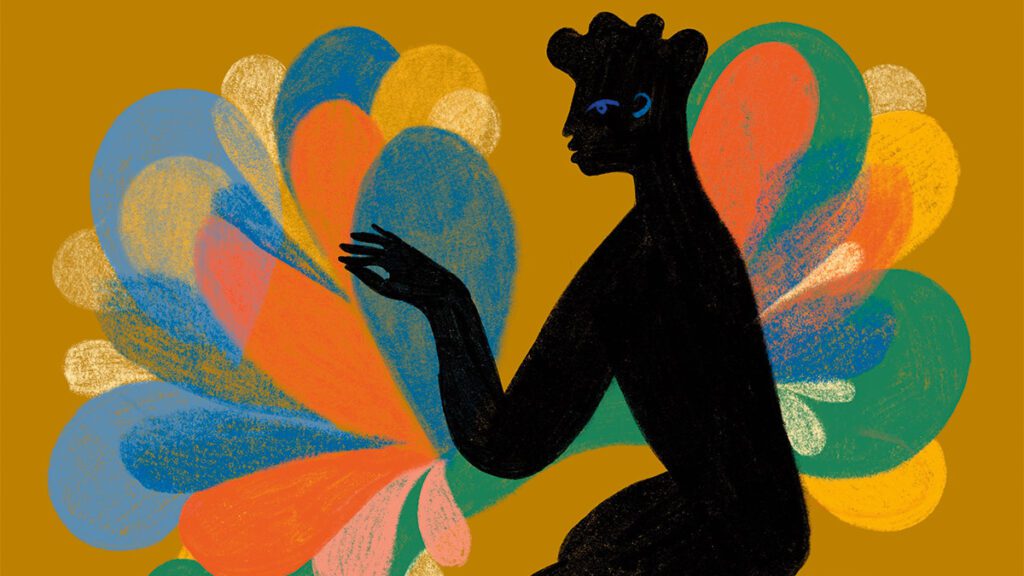

Morality
There’s a transparent path to advantage, says Larry Ward. It’s the 5 precepts widespread to all Buddhist traditions.
Our world is in an ethical emergency affecting our social, private, and religious well-being. On daily basis, our hearts break from what we see and endure. Thankfully, a brand new morality is rising in response, catalyzing social, cultural, and political change.
We’re witnessing radical shifts in social consciousness round sustainability, racism, gender equality, LGBTQ+ rights, and extra. With these shifts occurring in any respect societal ranges, we encounter resistance—reactivity, excessive dualism, and even violence.
Our collective patterns of resisting change are centuries previous; many individuals stubbornly resist change, nonetheless optimistic.
“Advantage permits us to seek out recent imaginative and prescient for particular person and collective wellness.”
Amid this fray, sila (morality or advantage) shines, pointing the way in which to goodness, kindness, and security, providing a therapeutic balm to struggling. After we’re overwhelmed with confusion, temptation, and weariness, we are able to take refuge in working towards sila. This paramita can remodel our recurring responses, activate our braveness, permit us to transcend outdated ideologies, and awaken the pure morality in our hearts. Sila helps keep our stability, providing a sensible technique to untangle the delusions separating us from the earth, each other, and all beings.
Advantage is on the core of Buddhist understanding and apply. The basis vitality of sila lies in observing the unique 5 precepts taught and transmitted for hundreds of years by all Buddhist traditions. My trainer, Thich Nhat Hanh, reframed the precepts with clearer, extra accessible language. Renaming them the “5 mindfulness trainings,” he expanded and up to date them so we are able to convey mindfulness into each space of our lives. Reasonably than strict guidelines, the trainings supply a path to create a extra compassionate world. We’re invited to obtain, be taught, and embody the trainings.
The primary coaching is reverence for all times. Conscious of the struggling attributable to killing, we decide to cultivating the perception of interbeing, rising our compassion, and studying methods to guard the lives of all beings.
The second coaching is true happiness. With this coaching, we’re conscious of the struggling attributable to exploitation, stealing, and oppression, and we apply generosity in all our ideas, speech, and actions.
The third coaching is real love, which is grounded in an consciousness of the struggling attributable to sexual misconduct. Guided by real love, we defend the protection and integrity of people and {couples}, households and society.
The fourth coaching is loving speech and deep listening. Starting with an consciousness of the struggling attributable to unmindful speech and a scarcity of listening, we decide to participating in compassionate speech and listening. We promote reconciliation and peace in ourselves and amongst different folks, teams, and nations.
Lastly, the fifth mindfulness coaching is nourishment and therapeutic. This coaching brings us into consciousness of the struggling attributable to unmindful consumption. We apply aware consuming, ingesting, and consuming to be able to domesticate good well being—bodily and psychological—for ourselves, family members, and society.
With these 5 mindfulness trainings, we apply advantage. This permits us to seek out recent imaginative and prescient for particular person and collective wellness, and to develop and maintain the embodied perfection of knowledge. As advantage takes up residence in our hearts, it brings love, peace, and resilience to our world.
Larry Ward is a senior trainer in Thich Nhat Hanh’s Plum Village custom and the creator of America’s Racial Karma.
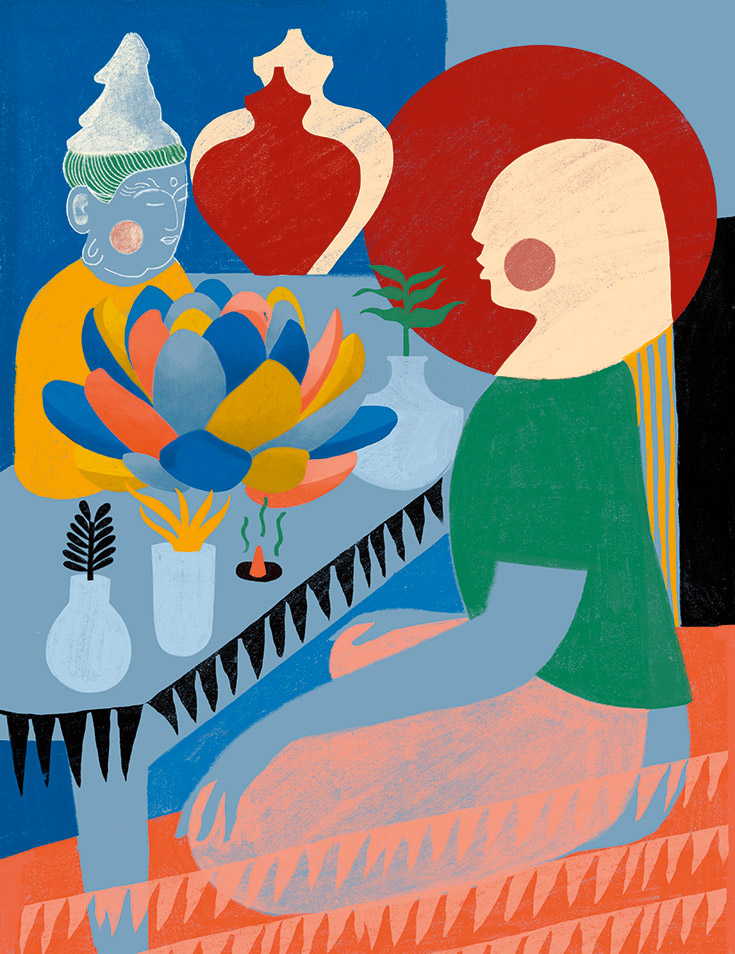

Renunciation
Surrender the ego, the small self, says Tuere Sala. It feels good to let go.
Renunciation, the third parami, is usually spoken of or appeared upon as harsh and restrictive. Every time we’re in some issue the place we want help, harshness and restrictiveness don’t resonate. However what we must always know is that renunciation really strengthens our capability to decide on nonsuffering over struggling.
We often transfer by life utilizing our reptilian brains, which depend on fast pondering and impulsivity. Our reptilian brains exist within the primal world of behavior. A behavior will get shaped sooner or later in our lives, and the tendency is that we proceed with that behavior forevermore. The longer you reside, the extra habits you might have. Most of our habits come up out of one of many three poisons—greed, hatred, and delusion—which implies they’re repeatedly main us into struggling.
“Renunciation creates a niche, so we are able to see the presence of alternative.”
Renunciation acts as an interference to this recurring way of life. It creates a niche, so we are able to see the presence of alternative. This alternative, which exists in each second, is the distinction between struggling and nonsuffering. The extra we see alternative as an actual choice, the extra we are able to select nonsuffering over struggling. Renunciation is how we see the existence of alternative; it’s what offers us the time to decide on nonsuffering.
Once I first got here into the apply, I created a ceremony for myself to change into a Buddhist. I didn’t have a sangha; it was simply me and my intention to be Buddhist. As a part of my ceremony, I vowed to do the least quantity of hurt attainable, to be as form as I might, and to stay with restraint.
On the time, I assumed doing the least quantity of hurt and being form can be essentially the most troublesome issues for me to do, principally as a result of I used to be very self-centered, smug, and overly reactive. It turned out, although, that the vow to stay with restraint made the opposite two vows a lot simpler to stay. Finally, renunciation is about renouncing the ego, the small self. Whereas renunciation could be about renouncing worldly pleasures, I equated “dwelling with restraint” to not all the time getting my manner.
It was not simple for me to resign getting my manner. As a working towards lawyer, I used to be sensible, articulate, and all the time assumed I used to be proper. I felt like my manner was essentially the most environment friendly and logical. The concept of following another person’s manner didn’t make sense to me. I thought of totally dwelling the vow of renunciation to be an act of generosity. Time and time once more, I stored feeling the strain of eager to get my manner. That rigidity jogged my memory of my vow. I then had the area to decide on to be beneficiant, which allowed me to just accept one other individual’s manner.
At first, I principally ignored the vow. Over time, nonetheless, I started to see the selection between enduring the ache of forcing my manner upon a scenario or being beneficiant. I willingly started to decide on being beneficiant over and over, creating a brand new behavior of thoughts towards renunciation, generosity, and open-heartedness.
Tuere Sala is co-guiding trainer at Seattle Perception Meditation Society and co-chair of the guiding trainer’s council at Spirit Rock Meditation Middle.
Knowledge
Knowledge, says Justin Miles, is a realizing that sees, as an alternative of scrutinizing what it sees.
Once I was on a meditation retreat over twenty years in the past, folks had been paired collectively for an train. One individual was to ask a query; the opposite was to hear overtly earlier than responding.
I used to be paired with the director of the retreat. Desirous to impress him, I requested a “deep” query that began one thing like, “Based on the Buddha, the character of the thoughts is claimed to exist as…” He interrupted, shouting on the high of his lungs, “Ashe!”
All the pieces within the room and all the pieces in me stopped. I stared at him surprised and embarrassed, not realizing what to do or say. As uncomfortable as I felt, I understood that his response was an invite to expertise the second another way. I bowed, and our alternate was over.
“An aspiring bodhisattva infuses prajna into all of the paramitas.”
I’m grateful for my trainer’s sword-like knowledge and compassion. Seemingly with out thought, he minimize by my try at deceiving him or myself into believing that both of us was something apart from what we had been. Making an attempt to be one thing I used to be not was unkind to myself; it was form of my trainer to wake me as much as this.
His response was an instance of prajna paramita, one of many perfections of a bodhisattva. Prajna could be translated as “knowledge,” “perception,” “transcendent information,” or “superior realizing.” However what’s superior realizing?
“Realizing” usually refers to intelligence or how properly we relate to an expertise. With prajna, we ask, “How do I relate to the expertise of the thoughts that’s past the standard knowledge-gathering course of involving our senses?” We ask, “What’s it prefer to fully loosen up my idea-making and idea-holding about myself and the world?” When all conceptualizing has been let go of, what’s left is prajna: a direct, sharp realizing that sees, as an alternative of scrutinizing what it sees. It’s full consciousness of the nonconceptual expertise of nonself and vacancy.
An aspiring bodhisattva infuses prajna into all of the paramitas, turning practices like generosity and endurance into nonconceptual experiences. In flip, the apply of the opposite paramitas informs our relationship with prajna.
Prajna is cultivated by shamatha vipashyana apply, which introduces the meditator to a state of relaxed attentiveness and pure, boundless compassion. To apply shamatha (calm-abiding meditation) discover a quiet, snug place to sit down, both on a cushion or a chair. Shut your eyes and spot the feeling of your inhalations and exhalations. Relaxation your consideration on the breath, with out making an attempt to manage or manipulate it. Every time your thoughts wanders, merely acknowledge the ideas or distractions and gently convey your consideration again to the breath. Proceed this apply for a chosen time frame, beginning with brief periods and steadily rising the period.
When you’ve developed some stability, readability, and power by shamatha apply, transfer on to vipashyana (perception) meditation. To do that, select an object of focus, similar to a bodily sensation, emotion, or thought. Direct your consideration to the chosen object and observe it with curiosity and nonjudgment. Discover its qualities, arising and passing away, and related sensations or ideas. Attempt to acquire perception into the item’s true nature and the interdependent nature of all phenomena. In case your thoughts will get distracted, gently convey it again and proceed the investigation.
A sustained dedication to shamatha vipashyana cultivates a thoughts free from conceptual limitations and a bravery that defies conference to be able to profit all beings.
Justin Miles is a Buddhist trainer in addition to a counselor who works within the area of neighborhood psychological well being and substance abuse.
Effort
Once you see the ability of apply, says Venerable Pannavati, you naturally apply with extra vigor.
I hear loads of speak in Buddhist circles about apply, however little or no about attainment. Cultivating viriya improves our probability of success on the eightfold path. Viriya is the lifeblood of the paramitas; it’s the high quality essential to actualize the others. Somebody who embodies viriya has a thoughts intent upon dwelling and realizing the best dharmic ideas, second by second, by no means slacking, by no means capitulating.
In English, viriya is usually translated as “effort.” Different translations embrace “vitality,” “enthusiasm,” and “diligence.” It’s a mistake to think about viriya simply “vitality” or “effort”—that’s too obscure. Viriya particularly denotes a form of effort that’s conducive to attainment, permitting us to persist in our aspirations till we’re victorious. It encompasses the best levels of dedication, advantage, fearlessness, will, exertion, and vigor {that a} disciple of the Buddha can attain.
“Viriya allows us to develop optimistic attitudes that help helpful outcomes.”
Viriya is a joyful perseverance, the place we really feel happiness in overcoming defilements and obstacles, inspiring us to embrace apply. For instance, we could oversleep one morning, however we delight as we hop off the bed, decided to maintain our vow to begin our day with meditation.
Viriya can be focus, internal power, and dedication in apply. It’s religion within the fact and efficacy of the dharma that solidifies viriya. This isn’t blind religion, however a confidence born of expertise; we all know that dharmic apply delivers outcomes as a result of we now have skilled it. If we now have viriya, our religion is adequate to encourage us to be unwavering within the face of life’s unknowns.
Viriya allows us to develop optimistic attitudes that help helpful outcomes. For instance, one morning we could get up on time, however we will not be smitten by our religious apply. Nonetheless, we do it anyway, as a result of we’re trustworthy to our vow to begin every day with religious apply as an alternative of following what emotions come up within the second.
The Buddha stated this skillful angle is critical to beat obstacles and full the trail to liberation. Within the Kitagiri Sutta, the Buddha advises trustworthy disciples to inform themselves, “Let my pores and skin, sinews, and bones dry up, along with the flesh and blood of my physique, however my viriya shall not be relaxed as long as I’ve not attained what could be attained.”
It takes time to domesticate this psychological high quality. As we develop viriya, we construct our capability to stay steadfast and unmovable based mostly on our conviction. This offers us the chance for liberation on this life.
A former Christian Pastor, Venerable Pannavati is ordained within the Therevada and Chan traditions of Buddhism.
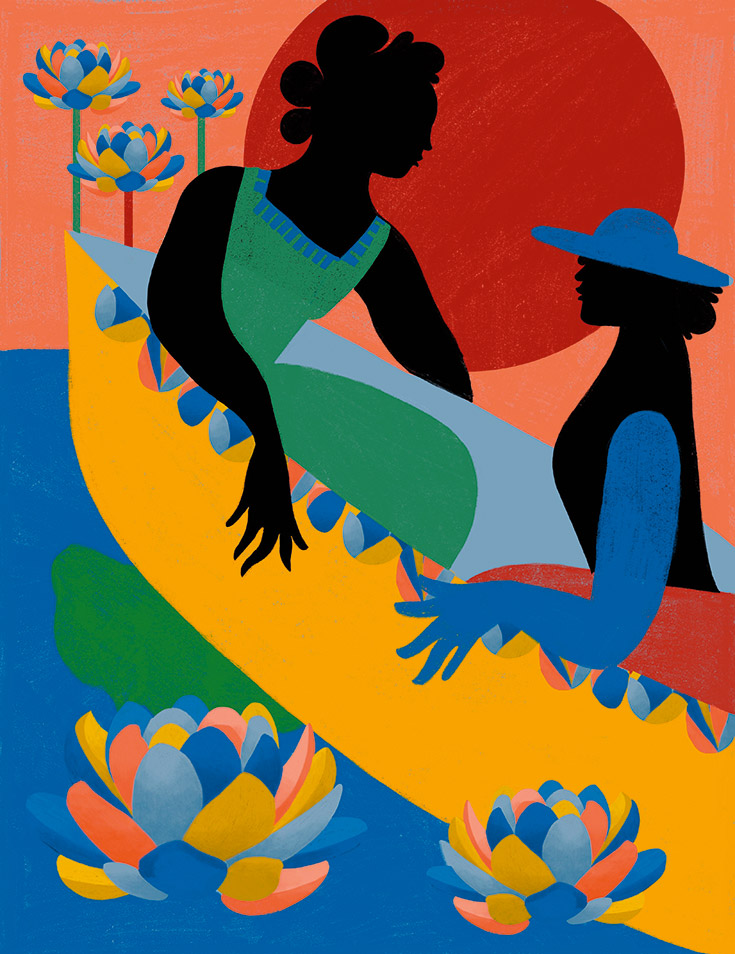

Endurance
Endurance, says Zenju Earthlyn Manuel, is tranquility and wellness, safety and pleasure.
Shantideva, a Buddhist sage of previous, aligned his teachings on endurance with one of the crucial troublesome feelings: deep-seated anger. I think his teachings on endurance got here from his personal expertise of being disrespected within the monastery the place he lived. Anger and rage, together with worry, are obstacles to experiencing endurance.
I’ve not all the time tamed my mood, which implies based on the teachings of Shantideva, I’ve had little to no endurance most my life. I’ve by no means recognized cool water, water to relaxation or reside in. As a substitute, I’ve recognized principally hearth. It has appeared to me that releasing the fiery forces of rage would imply not addressing what I’m indignant about.
“Can we permit ache and struggling to be simply what they’re with out anger or worry?”
Anger and rage are sacred to me. Being black-skinned, I resonate with creator James Baldwin (1924–1987) who as soon as stated, “To be a Negro on this nation and to be comparatively aware is to be in a state of rage nearly all the time.”
If anger and rage are embedded in a darkish physique, then how will I do know endurance and what it affords? If I really feel dominated by somebody, or one thing, for protecting me from dwelling totally, how can endurance enter my life? With these questions in thoughts, although I walked barefoot on the chilly flooring of temples, nonetheless the warmth of what disturbed me surrounded my head. I needed to know serenity, to reckon with the craze I felt dwelling amid racism and extra. Shantideva’s teachings addressed my quest.
When taunted by his fellow monks, Shantideva responded by delivering teachings that had been so profound they nonetheless exist as we speak, greater than a thousand years later. That supply was an act of endurance. In his epic poetic educating, The Approach of the Bodhisattva, he expounded:
These laid low with the ache of anger,
By no means know the tranquility of thoughts—
Strangers they are going to be to each pleasure;
They are going to neither sleep nor really feel safe.
I heard Shantideva calling us to freedom from the results of anger and rage. He was saying that the outcomes of endurance are tranquility and wellness, pleasure and pleasure, sleep and relaxation, and safety in dwelling a life with out feeling threatened.
Can we permit ache and struggling to be simply what they’re with out anger or worry? If the volcanic experiences of rage really feel sacred, can they be held sacredly on the altar by which we now have made our choices, as an alternative of harming others by revenge or defensiveness?
Shantideva didn’t understand the monks as enemies. There aren’t any enemies that we should set straight, assault, or mistreat. There are solely terrorized folks of all backgrounds, making an attempt to manage life’s circumstances by fight. The way in which of endurance is to see that perceiving others as “the enemy” is the way in which of aggressive and militarized societies. The way in which of endurance is to not wait, or take a breath, and see at a later time what’s to be carried out; it’s to fully withdraw, to take no additional motion, not now or sooner or later. The way in which of endurance is to acknowledge anger and rage as unattended worry boiling over. As soon as we perceive this, tranquility and peace will grace us.
Zenju Earthlyn Manuel’s books embrace Opening to Darkness and The Deepest Peace.
Truthfulness
Aishah Shahidah Simmons on how she discovered to be sincere, not simply with others—however with herself.
I grew up listening to in regards to the want for fact, justice, fairness, and peace. I’m a middle-aged daughter of human rights activists who put their lives on the road upholding their values. They had been incarcerated for registering Black folks to vote within the Jim Crow South and for his or her conscientious objections to the Vietnam Conflict.
I’m additionally a survivor of childhood sexual violence. I informed the reality to my mother and father in regards to the hurt my grandfather was inflicting me. Initially, they didn’t need to imagine it. They didn’t take away or defend me, as a result of whereas my mother and father had been working for peace and justice nationally and internationally, my grandparents had been my caretakers.
“Apply is discovering the reality in all its complexities and sweetness.”
Because of this, I’ve had an fascinating relationship with fact. I discovered to misinform myself to outlive the hurt I endured for 2 years as a tween and to outlive my mother and father’ roles in ignoring my ache for many years.
Like many, I joined Buddhist apply as a result of I used to be struggling. I’m a Black feminist lesbian who thought my struggling was solely due to the exterior circumstances of racism, sexism, sexual violence, and betrayal that I endured. I believed we required fact from others, not essentially from ourselves.
Nonetheless, Buddhist apply teaches me that awakening the reality from inside is integral to liberation. Training awakening sacca (fact) from inside deepens my ongoing experiential understanding in regards to the universality of struggling by the 4 noble truths. In apply, sacca invitations us to be current in acknowledging struggling, understanding the way it arises, and the way we are able to attenuate and finish it. Sacca turns us repeatedly again to the noble eightfold path.
That is rigorous work. As a substitute of turning away from struggling, mine and others, or reacting to struggling with none discernment or compassion, I flip towards and reply to the reality of struggling by searching for the way in which out of struggling.
I don’t undergo uniquely; neither do you. Whereas there’s a broad spectrum of struggling, all struggling is fueled by greed, hatred, and delusion. In search of fact from inside creates fertile floor for me to carry the obvious actuality of variations with the final word actuality of oneness concurrently. With out spiritually bypassing one to get to the opposite, I attempt to maintain the reality of each.
I’ve devoted my grownup life to breaking silences about sexual trauma, providing therapeutic paths, and searching for noncarceral accountability for hurt. Earlier than my apply, I didn’t totally perceive that I run the super danger of replicating dangerous conduct if I’m not in contact with the reality from inside.
There are occasions once we, as laypeople engaged in on a regular basis society, are known as to behave instantly within the face of struggling. We can’t bypass that decision. As a substitute, we are able to pause, even briefly, and be attuned to the reality from inside to not exacerbate our struggling and the struggling of others.
The Buddha stated, “We should always examine the very coronary heart of issues.” Apply is discovering the reality in all its complexities and sweetness. We need to unveil essentially the most profound fact in our personal experiences. With fact, we see issues as they’re, not as we wish them to be. Right here, knowledge emerges from seeing actuality, not delusion. That’s a pathway to freedom.
Aishah Shahidah Simmons is the editor of the anthology Love with Accountability and the producer/director of No! The Rape Documentary.
Willpower
To beat a scarcity of self-confidence, says Jan Willis, domesticate joyous resolve.
I’m deeply moved by the picture the nice poet Shantideva offers of the brave bodhisattva who glides down into the sufferings of samsara “as swans sweep down upon a lotus lake.” As he described it, there’s such pleasure and ease within the bodhisattva’s dedication.
The Pali time period adhitthana (dedication) and the Sanskrit phrase virya (effort) have a lot in widespread in terms of describing a bodhisattva’s conduct. They every seek advice from the bodhisattva’s unshakable resolve, her robust and joyous dedication, to satisfy the promise to liberate all beings and to hold out all the mandatory actions to take action.
Awakening itself will depend on dedication. The Buddha, we’re informed, was as soon as an abnormal individual like us, however he attained awakening owing to his robust resolve to help others. This chance to achieve enlightenment is there for all sentient beings! As Shantideva tells us in The Approach of the Bodhisattva:
That if they convey forth power of perseverance,
Even bees and flies
And gnats and grubs will acquire
Supreme enlightenment, so laborious to seek out.
My root trainer, Lama Thubten Yeshe, was well-known for his joyful angle; nothing ever appeared to harass him or convey him down. And he sought to cross on this calm and ease to his college students. As a graduate pupil I keep in mind typically coming to him with worries, complaints, and emotions of despondency. His first remarks had been all the time, “Oh, that’s so easy, expensive! Don’t fear; that’s so simple!” I now see that recommendation as a mark not solely of his nice compassion, however of his personal apply of dedication.
“Awakening itself will depend on dedication.”
Lama Yeshe as soon as informed me, “Research and be taught properly all the pieces—whether or not languages or different abilities—as a result of, sooner or later, you would possibly be capable of assist only one individual due to realizing that language or talent!” He stated I ought to “method each probability to be taught with that form of angle!” He was displaying me the best way to apply dedication in earnest.
Coaching within the perfection of dedication helps us overcome the three kinds of laziness: having no want to do good, being distracted by unfavourable actions, and underestimating or doubting one’s capability. Once I first met Lama Yeshe, I used to be significantly shackled by the third laziness. Beset with low vanity, I doubted my capability to do good and thought I might by no means accomplish any large objectives—to say nothing of reaching awakening! But, over the fifteen years that I studied with him, growing my self-confidence was his greatest reward and educating. He did this in delicate and not-so-subtle methods, from as soon as tasking me with writing his lecture for that night—utilizing solely Sanskrit terminology, in two hours!—to praising my fast intelligence at each flip and inspiring all my educational pursuits. By the point I earned my graduate diploma from Columbia, I’d taken twice the variety of required programs in half the time! Even as we speak my coronary heart delights when I’ve a Buddhist matter to analyze, or a lecture to organize that helps others higher perceive a precept of Buddhism.
I smile now, pondering of my lama’s loving remarks: “That’s so easy, expensive! After all, you’ll be able to, expensive!” And of these gnats and grubs, future buddhas all.
Jan Willis is the creator of Dreaming Me Black, Baptist, and Buddhist, and Dharma Issues: Girls, Race, and Tantra.
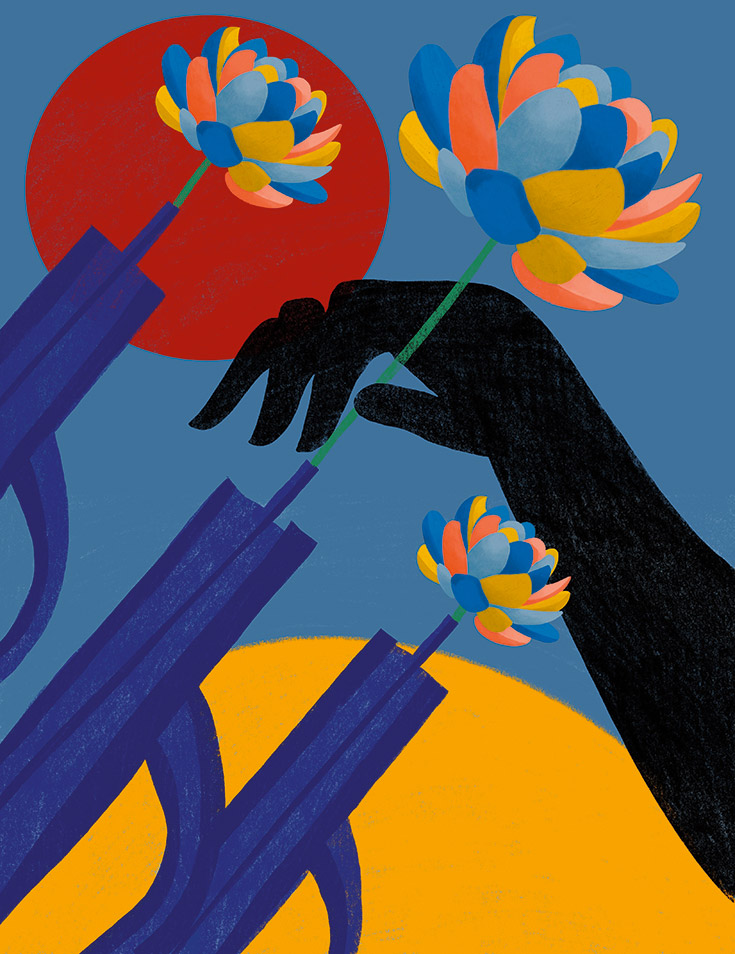

Loving-Kindness
Fight veteran Ralph Steele explains how metta meditation helps his therapeutic from PTSD.
At Vipassana meditation retreats within the early Nineteen Seventies, when folks discovered I used to be a Vietnam fight veteran, many responded with disgust. “How might you do these issues,” they requested, “and are available to a retreat like this?”
They didn’t perceive how recurrent trauma from warfare prompts your nervous system—how anger, anxiousness, and frustration come up as devastating poisons for thoughts and physique. Eradicating the uniform is a large, lonely transition. Whereas I continued working towards and attending retreats, I kept away from sharing my veteran standing. It was troublesome to be in a meditation neighborhood that opposed my former livelihood.
“I launched into the eightfold path to handle trauma, utilizing loving-kindness in each step of the trail.”
Even when trauma shuts down the guts, we are able to domesticate common love. Within the Karaniya Metta Sutta, the Buddha’s discourse on loving-kindness, he talks about how necessary it’s to be “one who’s expert in goodness and who is aware of the trail of peace.” Studying to skillfully domesticate goodness means growing loving-kindness as we stroll the dharma path.
Loving-kindness (metta or maitri) apply begins with tenderness towards oneself, by saying “Might I be properly.” Then, we deal with comforting relationships: a accomplice, an elder, a pet, or somebody we extremely regard who loves us unconditionally. Visualize them and, in your thoughts, specific loving phrases for them, like, “Might you be properly.” This apply can proceed till we sense our consolation zone rising. Subsequent, we image somebody we now have impartial emotions for—possibly that is somebody we solely know casually—and we apply metta for them. Lastly, we visualize somebody with whom we’ve had difficulties, and once more we want them properly till we sense development.
As confirmed by researchers, we’re naturally social beings and undergo when alienated. In 1987, I started educating Vipassana meditation. This was a social endeavor that helped my PTSD. My teammates and associates had not solely died from warfare, but in addition from heroin overdose. My dharma neighborhood turned my new group. I ramped up the apply of loving-kindness to ease my psychological, bodily, and emotional ache. We had been guided by the 4 noble truths: recognizing an sickness, inspecting its causes, treating it, and managing it by a protected atmosphere to let love stream and attain new ranges with a group.
I launched into the eightfold path to handle trauma, utilizing loving-kindness in each step of the trail. I cultivated loving-kindness in my speech, actions, and livelihood. With loving-kindness flowing from my open coronary heart, my mindfulness grew. My effort turned motivation, and my focus turned calm alertness. Knowledge was invaluable alongside like to domesticate proper view and wholesome pondering.
Working with metta soothed my PTSD, and it helped me perceive my perceptions, resolve uneasy psychological formations, and discover the fitting alternative of phrases. Loving-kindness infused my physique, increasing my consolation zone in my dharma neighborhood and private relationships. Feeling wordlessly relaxed in such an exquisite neighborhood was like coming house.
Utilizing the teachings of the Kariniya Metta Sutta mixed with the 4 noble truths with emphasis on the eightfold path builds self-confidence and helps us work with life’s troublesome moments. After we come into equanimity, we perceive the talents of goodness, and the trail of peace turns into clear.
Ralph Steele is the founding father of Life Transition Meditation Middle in Santa Fe the place he serves because the guiding meditation trainer.
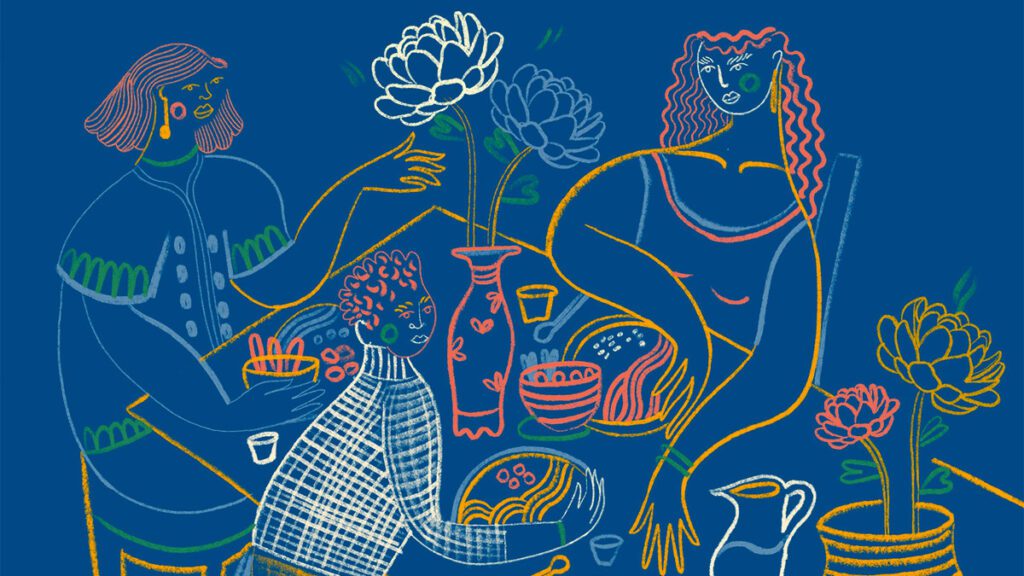

Equanimity
In any given scenario, how will you know if, when, and the way you need to reply? Bradley Donaldson explains.
For some motive, equanimity—the final of the ten paramis—has a foul popularity. I think about it’s as a result of the phrase “equanimous” brings to thoughts the picture of a chilly and unmoving practitioner. But it’s really about peace, not apathy. Once I consider equanimity, I image the face of the legendary bodhisattva Guanyin. With a serene smile, she aids these in want.
Along with being a parami, equanimity additionally exhibits up in one other well-known Buddhist listing of qualities: the 4 brahmaviharas, or chic attitudes. The opposite brahmaviharas are loving-kindness, compassion, and appreciative pleasure. Just like the roots of a tree, the earlier paramis and brahmaviharas reinforce equanimity.
“Inhaling, we see the scenario for what it’s. Respiratory out, we keep curious. ”
Certainly, the late Venerable Thich Nhat Hanh typically supplied the picture of a tree swaying in violent winds when he mentioned equanimity. Its leaves and branches could flutter about, however the trunk stays centered, supported by a powerful root system. Equanimity is that secure middle held up by the opposite qualities of coronary heart.
After all, we’re not literal bushes. We’re not inert, and equanimity isn’t inertness. We will and will reply to moments and circumstances that come up as we undergo life. Equanimity is being centered sufficient to know if, when, and the way to answer life’s alternatives and challenges. Equanimity is the knowledge to just accept circumstances past our management.
Now that we now have some understanding of what equanimity is, let’s speak about the best way to domesticate it. Like all talent we wish to develop, being equanimous takes apply. Our apply takes place on and off the cushion.
After we meditate, equanimity is about cultivating stability whereas remaining curious and open to our expertise. We’d use aware respiratory to do that. Whereas respiratory out and in, what can we confront on the cushion? Discomfort, maybe, or painful recollections? Perhaps restlessness and tedium? All that we suppress tends to rise to the forefront when the thoughts is quiet. Equanimity turns into about accepting these arisings. The breath, then, turns into our anchor, our tree trunk.
Off the cushion, the apply is comparable in that we’re cultivating stability, however now we’re doing it whereas contending with the challenges of day-to-day life. So, how can we method what the Buddha known as the “worldly circumstances” of acquire, loss, standing, shame, reward, blame, pleasure, and ache? Will we react with bewilderment and frustration, or with understanding? Can we maintain our expertise with loving-kindness, compassion, and even pleasure? Inhaling, we see the scenario for what it’s. Respiratory out, we keep curious.
As we apply, we start to grasp the that means of equanimity on an intimate, visceral stage, and this understanding grows inside us over time. We will comply with the Buddha’s recommendation to apply equanimity in such a manner that it’s “ample, expansive, and limitless.” We will strengthen our capability to carry ourselves, others, and the world with love and compassion, and as soon as we try this, the fuller that means of equanimity seems: the calm capability to know what to do, what to not do, or whether or not to even “do” something in any respect.
Previously a monk, Bradley Donaldson teaches meditation. He’s centered on serving to queer and BIPOC people heal and domesticate connection.


